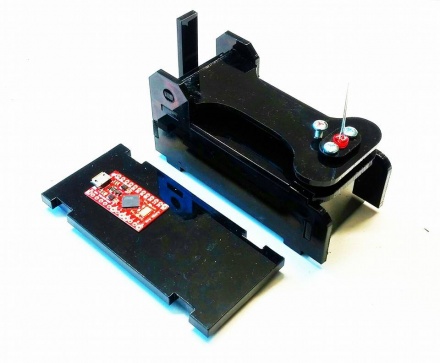Difference between revisions of "DIY Microvolume Spectrophotometers"
| Line 3: | Line 3: | ||
Attempt to build DIY Microvolume Spectrophotometers or Fluorospectrometers to quantitate micro-volumes of sample. | Attempt to build DIY Microvolume Spectrophotometers or Fluorospectrometers to quantitate micro-volumes of sample. | ||
| − | The NanoDrop products are very popular in scientific labs. The measurement principle of holding a drop between two points - the light source and the sensor - allows to measure samples as small as 0.5µL up to 2µL micro volume without a cuvette. The | + | The NanoDrop products are very popular in scientific labs. The measurement principle of holding a drop between two points - the light source and the sensor - allows to measure samples as small as 0.5µL up to 2µL micro volume without a cuvette. The simple basic principle should be perfect for DIY lab equipment. Let's try.<br> |
| − | To start simple, two approaches are tested, one using an LED and a photo sensor. The second, more advanced, using a DIY spectrometer. | + | To start simple, two approaches are tested, one using an LED and a photo sensor. The second, more advanced, using a DIY spectrometer.<br> |
| + | Possible applications:<br> | ||
| + | <br> | ||
| + | - Turbidity measurement<br> | ||
| + | - Spectral data and purity analysis<br> | ||
| + | - Measure nucleic acid, protein and colorimetric assays<br> | ||
| + | - Microvolume fluorescence measurements<br> | ||
| + | <br> | ||
== LED-Photosensor == | == LED-Photosensor == | ||
[[File:DIY_NanoDropConcept1.jpg|320px]] | [[File:DIY_NanoDropConcept1.jpg|320px]] | ||
| + | |||
| + | High performance LEDs can replace expensive light source and filters for excitation. | ||
| + | |||
Revision as of 10:42, 17 February 2014
Attempt to build DIY Microvolume Spectrophotometers or Fluorospectrometers to quantitate micro-volumes of sample.
The NanoDrop products are very popular in scientific labs. The measurement principle of holding a drop between two points - the light source and the sensor - allows to measure samples as small as 0.5µL up to 2µL micro volume without a cuvette. The simple basic principle should be perfect for DIY lab equipment. Let's try.
To start simple, two approaches are tested, one using an LED and a photo sensor. The second, more advanced, using a DIY spectrometer.
Possible applications:
- Turbidity measurement
- Spectral data and purity analysis
- Measure nucleic acid, protein and colorimetric assays
- Microvolume fluorescence measurements
LED-Photosensor
High performance LEDs can replace expensive light source and filters for excitation.
